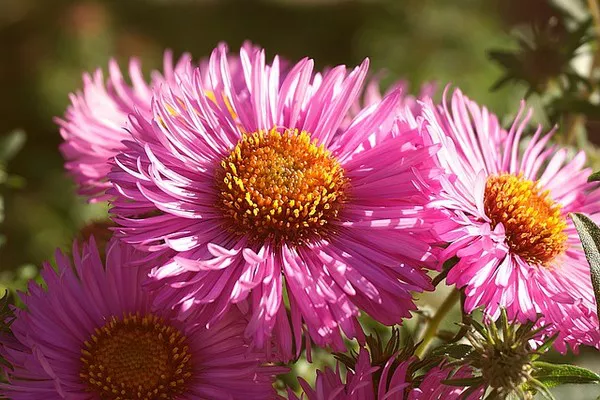Flowers have long been revered for their beauty, fragrance, and symbolic meanings. However, not all blooms are safe for our feline companions. As cat owners, it is crucial to be aware of the potential dangers lurking in our homes and gardens. Some flowers can be toxic to cats, causing a range of health issues from mild discomfort to life-threatening conditions. In this article, we will explore a list of flowers that are known to be deadly to cats and discuss the symptoms of poisoning, preventive measures, and safe alternatives for a feline-friendly environment.
Lethal Blooms: Flowers Toxic to Cats
Lilies (Lilium spp. and Hemerocallis spp.): Lilies are among the most toxic flowers for cats. Ingesting any part of the plant, including the petals, leaves, or pollen, can lead to severe kidney failure. Common varieties such as Easter lilies, tiger lilies, and daylilies pose a significant threat and should be completely avoided in households with cats.
Azaleas (Rhododendron spp.): Azaleas contain grayanotoxins, which can cause vomiting, diarrhea, and, in severe cases, lead to cardiovascular collapse. Even small amounts of ingestion can have serious consequences for cats.
Oleander (Nerium oleander): Oleander, a popular ornamental shrub with vibrant flowers, contains toxins that affect the heart and can lead to fatal cardiac arrhythmias. Ingesting any part of the plant, including the nectar, can be lethal for cats.
Autumn Crocus (Colchicum autumnale): Often mistaken for the harmless spring crocus, the autumn crocus contains colchicine, a highly toxic substance that can cause severe gastrointestinal distress, respiratory failure, and even death.
Foxglove (Digitalis purpurea): Foxglove contains cardiac glycosides that can impact the heart, leading to symptoms such as vomiting, diarrhea, and potentially fatal arrhythmias. All parts of the plant are toxic to cats.
Tulips and Hyacinths (Tulipa spp. and Hyacinthus spp.): These popular spring flowers contain toxins called lactones that can cause gastrointestinal upset and, in rare cases, more severe symptoms such as difficulty breathing and increased heart rate.
Cyclamen (Cyclamen spp.): The tubers of cyclamen contain compounds that can cause vomiting, diarrhea, and even heart abnormalities in cats. Ingesting the plant in any form can lead to poisoning.
Chrysanthemums (Chrysanthemum spp.): While often considered mild in toxicity, chrysanthemums can still cause gastrointestinal upset in cats. Ingesting large quantities may lead to more severe symptoms.
Recognizing Poisoning Symptoms
Cats may display various symptoms if they have ingested toxic flowers. Common signs of poisoning include:
Vomiting and Diarrhea: These are early signs of ingestion of toxic substances, and they can range from mild to severe.
Lethargy: A sudden lack of energy or interest in surroundings may indicate poisoning.
Difficulty Breathing: Respiratory distress can occur in severe cases of flower toxicity.
Increased Heart Rate: Elevated heart rate is a potential symptom, particularly with flowers containing cardiac glycosides.
Drooling and Pawing at the Mouth: These behaviors may indicate oral irritation.
Seizures: In severe cases, ingestion of toxic flowers can lead to seizures.
Preventive Measures
Preventing flower-related poisoning in cats requires diligence and proactive measures. Consider the following precautions:
Research and Education: Familiarize yourself with the flowers that are toxic to cats and ensure they are not present in your home or garden.
Secure Indoor Plants: Keep toxic plants out of reach, especially for indoor cats. Consider placing plants in areas inaccessible to feline companions.
Cat-Friendly Gardens: If you have an outdoor garden, opt for cat-friendly flowers such as catnip, catmint, or pet grass. Create a safe space where your cat can explore without encountering toxic blooms.
Supervision: Monitor your cat’s behavior, especially if they have access to outdoor spaces where toxic plants may grow.
Prompt Veterinary Care: If you suspect your cat has ingested a toxic flower, seek immediate veterinary attention. Early intervention can significantly improve the chances of a positive outcome.
See Also What Type Of Flowers Do Bees Like? A Comprehensive Guide
Safe Alternatives for a Feline-Friendly Environment
Creating a cat-friendly environment involves incorporating non-toxic flowers and plants into your living spaces. Consider the following safe alternatives:
Catnip (Nepeta cataria): Catnip is a favorite among cats and is entirely safe for them to enjoy. Planting catnip in your garden or providing catnip toys can offer a safe and enjoyable experience for your feline friend.
Spider Plant (Chlorophytum comosum): Spider plants are non-toxic and can add a touch of greenery to your home. Cats often enjoy batting at the hanging leaves, providing them with entertainment.
African Violet (Saintpaulia spp.): African violets are safe for cats and come in a variety of colors, making them a colorful and non-toxic addition to your home.
Areca Palm (Dypsis lutescens): Areca palms are safe for cats and can thrive indoors, adding a tropical touch to your living space.
Sunflowers (Helianthus spp.): Sunflowers are safe for cats, and their bright blooms can bring cheer to your garden without posing a threat.
Conclusion
While flowers contribute to the aesthetics of our living spaces, cat owners must prioritize the safety of their feline companions. Awareness of toxic flowers, recognizing symptoms of poisoning, and implementing preventive measures can ensure a secure environment for your beloved pets. By choosing cat-friendly plants and flowers, we can strike a harmonious balance between a beautiful living space and the well-being of our furry friends.


